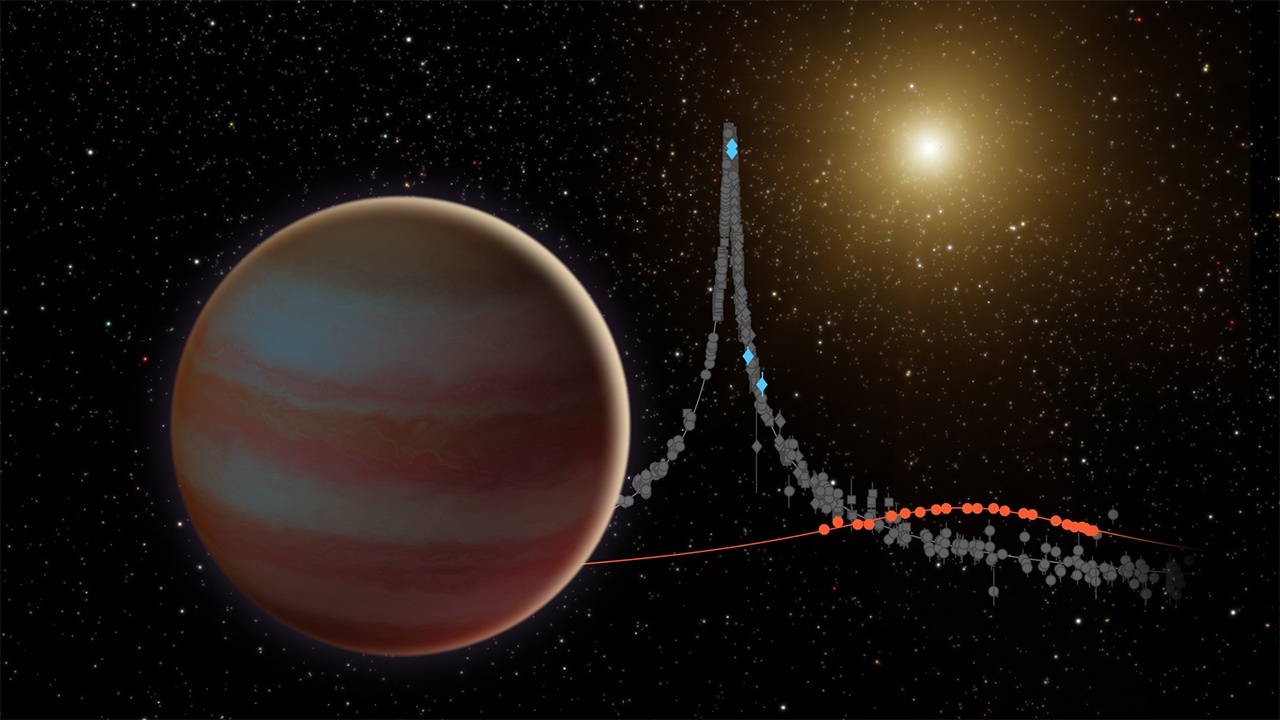Astronomers have discovered a pair of star-like objects orbiting each other extremely quickly, with an entire ‘year’ lasting just 1.9 Earth hours. Catchily named ZTF J2020+5033, the system consists of one object which is definitely a small star, and another that straddles the boundary between star and planet. The two objects appear to be very old, and understanding how they came to be orbiting so close together is teaching astronomers more about how solar systems change and evolve.
The planet-like object in the pair is classified as a Brown dwarf: a failed star without enough mass to jumpstart stellar fusion in its core. But this particular object is right on the boundary between a brown dwarf and a star, so astronomers can’t be sure which it is for sure, though they suspect the latter because it is so much dimmer than its partner.
The brown dwarf’s orbital period is seven times faster than the previous record-holding brown dwarf. It is so close to its partner that both could easily orbit each other inside our Sun. But a paper released this month suggests that they didn’t form like this.
“Both components must have been significantly larger when they were young than they are today, implying that the orbit has shrunk significantly,” the authors write.
Understanding that process is key to unlocking some of the secrets of solar system formation. The primary mechanism at work, they believe, is something called magnetic braking.
Stars have powerful magnetic fields. When solar flares and coronal mass ejections and other phenomena related to solar wind eject material from a star, the material is captured by the magnetic fields. It is carried out far from the star, eventually escaping altogether. But before it escapes, the material continues to spin with the star and its magnetic field. Just like a figure skater throwing their arms out to spin slower, this material slows a star’s spin.
In a binary system, the magnetic fields of both stars work together to slow their orbital period around each other, like two figure skaters holding hands with arms outreached.
Over millennia, not only do the stars lose mass, they also circle closer and closer together.
Current models used by astronomers suggest that magnetic braking is most pronounced in stars that are fully convective: they are massive enough that the convection zone of the star extends all the way into its interior.
But this binary pair is made up of two very small stars that are not fully convective.

“This strongly suggests that magnetic braking remains efficient below the fully convective boundary in at least some stars, contrary to the common assumption in many binary evolution models,” the paper argues.
That means that we might need to change how we think about the future evolution of binary pairs.
ZTF J2020+5033, for example, is expected to pass the Roche limit in 1.3 billion years, according to current models. At that time, the brown dwarf will be ripped apart by the gravity of its partner as it gets too close. But if magnetic braking is indeed in effect for these small stars, that timeline will come much faster, within just tens of millions of years.
The implications are clearly significant.
To get a better understanding of what’s going on, astronomers need to find more close-orbiting binary star-brown dwarf pairs, to make sure this isn’t just an outlier. But that’s easier said than done. Although they are expected to be common, brown dwarfs are so dim that they are difficult to find, resulting in what astronomers call a “brown dwarf desert” in their data sets.
Luckily, there are three new instruments that will excel at finding exactly these objects: Palomar Observatory’s wide-field infrared transient explorer (WINTER), which began operations in 2021; the Vera Rubin Observatory, expected to begin surveying in 2024; and the Nancy Grace Roman Space Telescope, launching in 2027.
Learn More:
Kareem El-Badry, Kevin B. Burdge, Jan van Roestel, and Antonio C. Rodriguez. “A transiting brown dwarf in a 2 hour orbit.” ArXiv Preprint.

